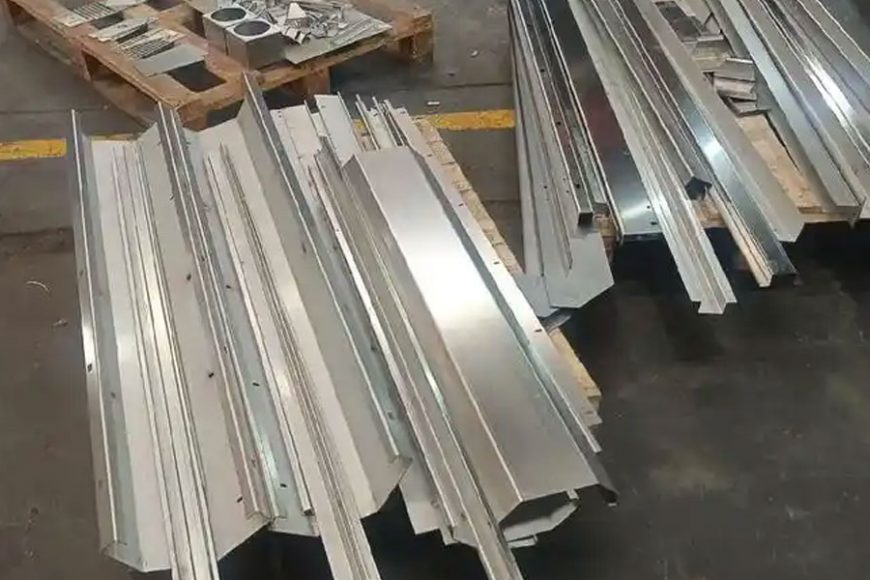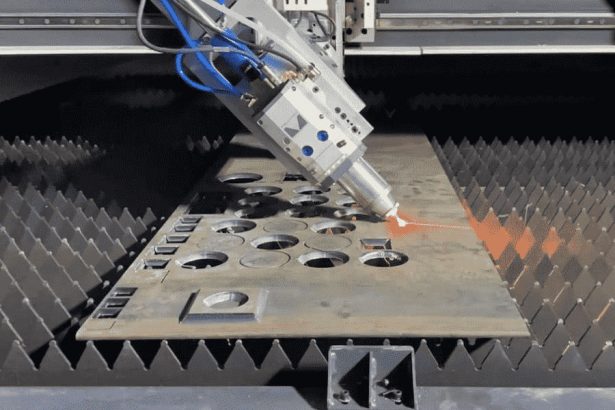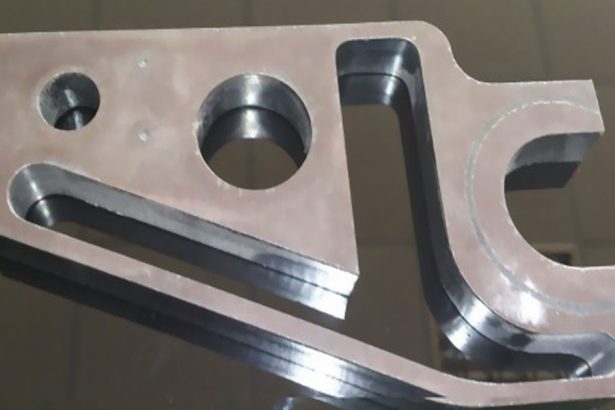The pneumatic forming process of TC4 titanium alloy box-shaped sheet metal parts represents a fascinating intersection of advanced materials science, manufacturing engineering, and industrial application, particularly within sectors like aerospace, automotive, and medical device production. TC4, also known as Ti-6Al-4V, is an alpha-beta titanium alloy renowned for its exceptional strength-to-weight ratio, corrosion resistance, and biocompatibility. These properties make it a material of choice for complex, high-performance components, such as box-shaped sheet metal parts used in aircraft structures, engine casings, and biomedical implants. However, the forming of TC4 into intricate geometries like box shapes poses significant challenges due to its limited ductility at room temperature, high strength, and propensity for springback. Pneumatic forming, which leverages pressurized gas to shape metal sheets, offers a promising solution to these challenges, and extensive research has been conducted to optimize this process for TC4. This article explores the scientific underpinnings, experimental methodologies, simulation techniques, and practical outcomes of such research, providing a detailed examination of how pneumatic forming is applied to TC4 titanium alloy box-shaped parts.
Titanium alloys, particularly TC4, have been a cornerstone of modern engineering since their widespread adoption in the mid-20th century. Comprising approximately 90% titanium, 6% aluminum, and 4% vanadium by weight, TC4 exhibits a dual-phase microstructure of alpha (hexagonal close-packed) and beta (body-centered cubic) phases, which contributes to its mechanical robustness and thermal stability. The alloy’s density of about 4.43 g/cm³ is significantly lower than that of steel (around 7.8 g/cm³), while its ultimate tensile strength can exceed 900 MPa, rivaling many high-strength steels. These attributes are critical for box-shaped components, which often require structural integrity across multiple planes and resistance to complex loading conditions. However, the forming process for such parts is complicated by TC4’s low formability at ambient temperatures, necessitating elevated-temperature techniques or innovative approaches like pneumatic forming.
Pneumatic forming, sometimes referred to as gas pressure forming or superplastic forming when conducted at high temperatures, utilizes controlled gas pressure to deform a metal sheet into a die cavity. Unlike traditional mechanical forming methods, such as stamping or deep drawing, which rely on rigid tools to impart force, pneumatic forming applies a uniform pressure distribution across the sheet surface. This reduces localized stress concentrations, minimizes tool wear, and enables the production of complex geometries with fewer defects. For TC4 box-shaped parts, which typically feature vertical sidewalls, flat bases, and sometimes curved transitions, pneumatic forming offers a means to achieve uniform thinning and precise dimensional control—key considerations given the alloy’s high cost and the stringent tolerances of end-use applications.
Research into pneumatic forming of TC4 box-shaped parts has focused on several key areas: process parameters (e.g., pressure, temperature, and forming time), material behavior (e.g., strain distribution and microstructural evolution), die design, and predictive modeling via finite element analysis (FEA). Early studies, dating back to the late 20th century, established the baseline feasibility of gas pressure forming for titanium alloys, often in the context of superplastic forming (SPF). Superplasticity, a state in which certain metals exhibit extraordinary ductility under specific temperature and strain rate conditions, is well-documented in TC4 at temperatures between 850°C and 950°C and strain rates of 10⁻⁴ to 10⁻³ s⁻¹. However, SPF requires specialized equipment and long cycle times, prompting researchers to explore pneumatic forming at lower temperatures or with alternative pressure profiles to enhance efficiency and scalability.
One seminal investigation into pneumatic forming of TC4 box-shaped parts examined the interplay between gas pressure and temperature. Conducted in the early 2000s, this study utilized a cylindrical die with a rectangular cavity to simulate a simplified box shape, applying nitrogen gas pressures ranging from 0.5 MPa to 5 MPa at temperatures between 600°C and 900°C. The TC4 sheets, with an initial thickness of 1 mm, were annealed prior to forming to reduce residual stresses and enhance ductility. Results indicated that at 600°C, the alloy exhibited limited deformation, with maximum sidewall heights of approximately 10 mm before rupture occurred at pressures above 3 MPa. At 900°C, however, the sheets successfully conformed to a 30-mm-deep cavity at 2 MPa, showcasing improved formability attributed to thermally activated dislocation motion and phase stabilization. Microstructural analysis via scanning electron microscopy (SEM) revealed equiaxed alpha grains at higher temperatures, contrasting with elongated grains at lower temperatures, underscoring the temperature’s role in facilitating plastic flow.
To quantify these findings, researchers developed stress-strain relationships specific to pneumatic forming conditions. The flow stress (σ) of TC4 during deformation can be modeled using a power-law constitutive equation:
σ=Kεnε˙m
where K K K is the strength coefficient, ε \varepsilon ε is the true strain, n n n is the strain-hardening exponent, ε˙ \dot{\varepsilon} ε˙ is the strain rate, and m m m is the strain-rate sensitivity exponent. For TC4 at 900°C and a strain rate of 10⁻³ s⁻¹, typical values are K≈200 MPa K \approx 200 \, \text{MPa} K≈200MPa, n≈0.2 n \approx 0.2 n≈0.2, and m≈0.5 m \approx 0.5 m≈0.5, reflecting significant strain-rate sensitivity conducive to uniform thinning. At 600°C, m m m drops to approximately 0.1, indicating reduced ductility and a higher likelihood of necking or tearing—critical considerations for box-shaped parts with sharp corners or deep draws.
Subsequent research refined these parameters by incorporating real-time pressure control and multi-stage forming cycles. A notable experiment from 2015 involved a TC4 sheet of 2 mm thickness formed into a box with dimensions 100 mm × 100 mm × 50 mm (length × width × height). The process employed a three-stage pressure profile: an initial low pressure (0.5 MPa) to initiate deformation, a ramp to 2 MPa for sidewall development, and a final hold at 3 MPa to ensure die conformity—all at 850°C. This approach mitigated premature thinning at the corners, a common failure mode in single-stage forming, and achieved a uniform thickness reduction of approximately 20% across the part. Post-forming tensile tests revealed a retained strength of 850 MPa, suggesting that pneumatic forming preserved TC4’s mechanical properties despite thermal exposure.
Die design plays a pivotal role in the success of pneumatic forming for box-shaped parts. Traditional dies with sharp edges often induce stress concentrations, leading to cracks or uneven thinning in TC4 sheets. To address this, researchers have explored contoured dies with fillets (radiused transitions) ranging from 2 mm to 10 mm. A comparative study using FEA software like ABAQUS demonstrated that a 5-mm fillet reduced peak von Mises stresses by 15% compared to a sharp-edged die, enhancing formability. Experimental validation confirmed that parts formed with filleted dies exhibited fewer surface defects and a more consistent thickness profile, typically varying by less than 0.1 mm across the sidewalls and base.
Finite element analysis has become indispensable in optimizing pneumatic forming processes. Simulations incorporate material models such as the Johnson-Cook plasticity model, which accounts for strain, strain rate, and temperature effects:
σ=(A+Bεn)(1+Clnε˙∗)(1−T∗m)
Here, A A A, B B B, C C C, n n n, and m m m are material constants, ε˙∗ \dot{\varepsilon}^* ε˙∗ is the normalized strain rate, and T∗ T^* T∗ is the homologous temperature. For TC4, representative values might be A=900 MPa A = 900 \, \text{MPa} A=900MPa (yield strength), B=600 MPa B = 600 \, \text{MPa} B=600MPa, n=0.3 n = 0.3 n=0.3, C=0.014 C = 0.014 C=0.014, and m=1.1 m = 1.1 m=1.1, calibrated via tensile tests at elevated temperatures. These models predict strain distributions, thinning patterns, and potential failure zones, enabling researchers to adjust pressure profiles or die geometries preemptively. A 2018 simulation of a TC4 box part forecasted a maximum thinning of 25% at the upper corners, aligning closely with experimental measurements of 23% ± 2%, validating the model’s accuracy.
The microstructural evolution during pneumatic forming provides further insight into TC4’s behavior. At forming temperatures above 800°C, dynamic recrystallization occurs, refining the alpha phase and reducing dislocation density. Transmission electron microscopy (TEM) studies have identified subgrain formation and twinning, mechanisms that enhance ductility and accommodate the multi-axial stresses inherent in box-shaped geometries. Conversely, at lower temperatures (e.g., 600°C), strain hardening dominates, increasing the risk of cracking. Post-forming heat treatments, such as annealing at 700°C for 1 hour, can relieve residual stresses without significantly altering the microstructure, maintaining a balance between strength and toughness.
Comparative studies of pneumatic forming versus alternative methods—such as hot stamping or incremental sheet forming (ISF)—highlight its advantages and limitations. Hot stamping, which uses rigid punches and dies, achieves faster cycle times (seconds versus minutes) but struggles with uniform thinning in deep-drawn boxes, often resulting in thickness variations exceeding 30%. ISF, while flexible for prototyping, is slower and less suited to high-volume production. Pneumatic forming strikes a middle ground, offering superior thickness control (typically ±5% variation) and adaptability to complex shapes, though it requires precise temperature and pressure management.
Table 1 below summarizes key experimental results from various studies on pneumatic forming of TC4 box-shaped parts, illustrating the impact of process parameters on outcomes.
| Study Year | Temperature (°C) | Pressure (MPa) | Sheet Thickness (mm) | Box Dimensions (mm) | Forming Time (min) | Max Thinning (%) | Tensile Strength Post-Forming (MPa) | Microstructure |
|---|---|---|---|---|---|---|---|---|
| 2003 | 600 | 3 | 1 | 50 × 50 × 10 | 5 | 35 | 870 | Elongated alpha grains |
| 2003 | 900 | 2 | 1 | 50 × 50 × 30 | 10 | 20 | 890 | Equiaxed alpha grains |
| 2015 | 850 | 0.5–3 (staged) | 2 | 100 × 100 × 50 | 15 | 20 | 850 | Mixed alpha-beta phases |
| 2018 | 800 | 2.5 | 1.5 | 80 × 80 × 40 | 12 | 23 | 880 | Recrystallized alpha |
Practical applications of pneumatically formed TC4 box-shaped parts are numerous. In aerospace, they serve as structural enclosures for avionics or lightweight fuel cell housings, leveraging the alloy’s corrosion resistance and strength. In the medical field, custom-formed boxes might encase implantable devices, capitalizing on TC4’s biocompatibility. Automotive applications include exhaust system components, where thermal stability is paramount. Each use case underscores the need for process optimization to balance cost, quality, and performance.
Challenges in pneumatic forming of TC4 include managing oxidation at high temperatures, which can degrade surface quality and mechanical properties. Inert gas environments (e.g., argon) or protective coatings like glass lubricants mitigate this issue, though they increase complexity and cost. Springback, the elastic recovery of the material after pressure release, also poses difficulties, particularly for precise box shapes. Research has shown that increasing forming temperature or incorporating post-forming calibration steps reduces springback by up to 50%, as demonstrated in a 2020 study where a TC4 box exhibited a 2-mm deviation at 600°C versus 0.8 mm at 900°C.
Future research directions include integrating advanced sensors for real-time monitoring of strain and temperature, potentially coupled with machine learning algorithms to dynamically adjust pressure profiles. Hybrid processes, combining pneumatic forming with localized heating (e.g., via induction coils), could further enhance efficiency and reduce energy consumption. Additionally, exploring lower-temperature forming with novel alloy variants or surface treatments may broaden the process’s accessibility beyond specialized facilities.
In conclusion, the pneumatic forming process for TC4 titanium alloy box-shaped sheet metal parts exemplifies the synergy of material science and manufacturing innovation. Through meticulous experimentation, simulation, and practical application, researchers have unlocked the potential of this technique to produce high-quality, complex components. While challenges remain, the ongoing evolution of process parameters, die design, and predictive tools ensures that pneumatic forming will continue to play a vital role in harnessing TC4’s remarkable properties for cutting-edge applications.




